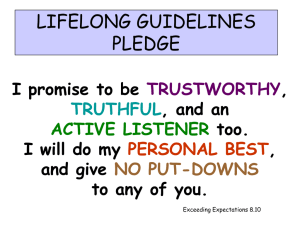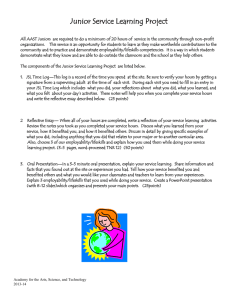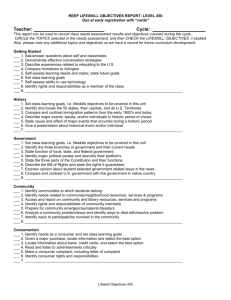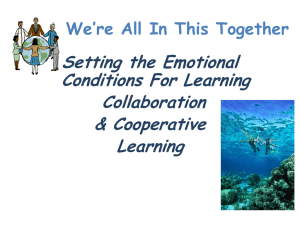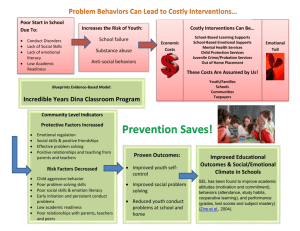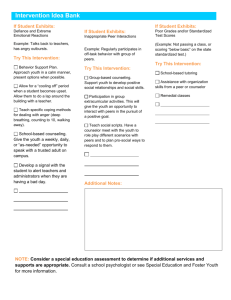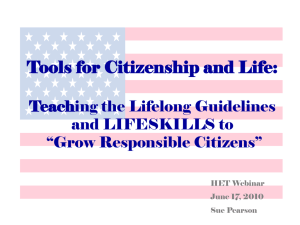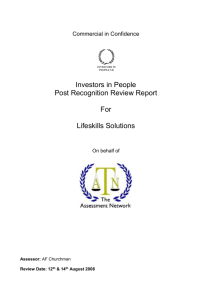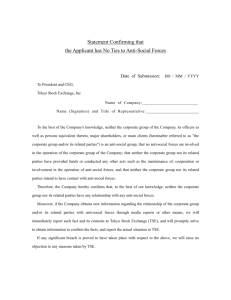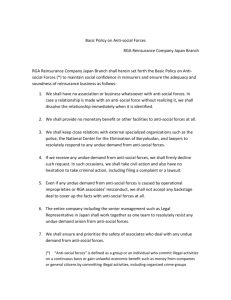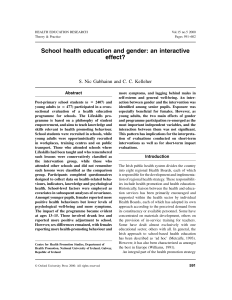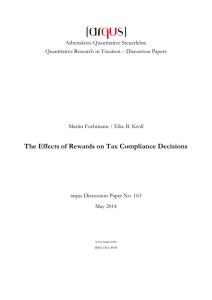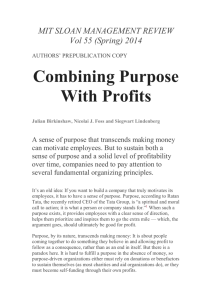8-1-12 Communicating.. - EPISCenter
advertisement
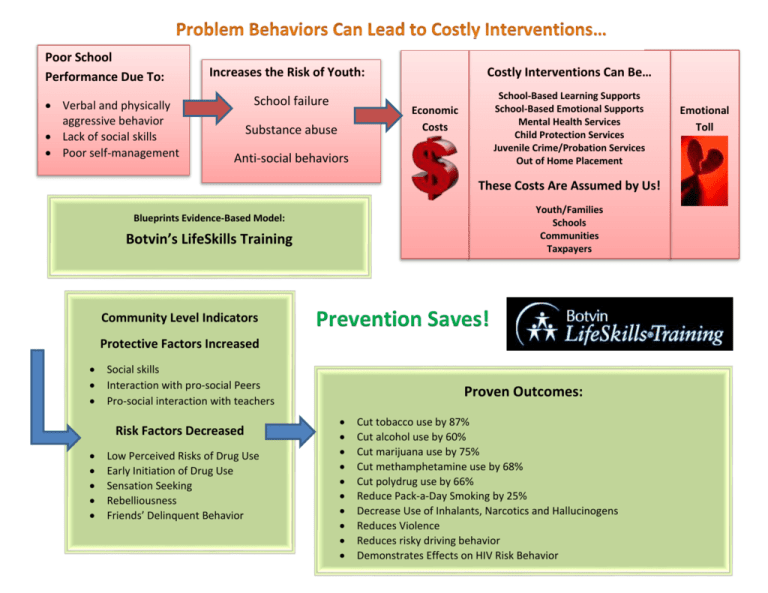
Poor School Performance Due To: Verbal and physically aggressive behavior Lack of social skills Poor self-management Increases the Risk of Youth: School failure Costly Interventions Can Be… School-Based Learning Supports School-Based Emotional Supports Mental Health Services Child Protection Services Juvenile Crime/Probation Services Out of Home Placement Economic Costs Substance abuse Anti-social behaviors These Costs Are Assumed by Us! Youth/Families Schools Communities Taxpayers Blueprints Evidence-Based Model: Botvin’s LifeSkills Training Community Level Indicators Prevention Saves! Protective Factors Increased Social skills Interaction with pro-social Peers Pro-social interaction with teachers Risk Factors Decreased Low Perceived Risks of Drug Use Early Initiation of Drug Use Sensation Seeking Rebelliousness Friends’ Delinquent Behavior Proven Outcomes: Cut tobacco use by 87% Cut alcohol use by 60% Cut marijuana use by 75% Cut methamphetamine use by 68% Cut polydrug use by 66% Reduce Pack‐a‐Day Smoking by 25% Decrease Use of Inhalants, Narcotics and Hallucinogens Reduces Violence Reduces risky driving behavior Demonstrates Effects on HIV Risk Behavior Emotional Toll XYZ County IMPRESSIVE LOCAL IMPACTS! MEETING LOCAL NEEDS (Include dates LST was implemented) Explain why LifeSkills was selected. This can include SES data, PAYS data, and other statistics from Mental Health, CYCS or Juvenile Justice System. Number of Classrooms Served: 1 Number of Youth Impacted: 69 IMPACT HIGHLIGHTS: Percent of youth experiencing positive change as reported by student pre & post assesment. CONTACT US! INSERT AGENCY NAME OR LOGO AND CONTACT INFORMATION IN THIS BOX Analyses by researchers from the Prevention Research Center at Penn State University have found economic returns up to $25.72 per dollar spent to implement LifeSkills training.* The economic benefits are based on the program’s significant likelihood to reduce substance abuse. (alcohol, tobacco, & illicit drugs) *Return on Investment for Prevention Programs March 2008 Number of Youth POTENTIAL SAVINGS FOR OUR COMMUNITY! (#) pre & post assessments completed. 100% 90% 80% 70% 60% 50% 40% 30% 20% 10% 0% 92.75% 92.75% 85.51% Decreased Anti-Social Increased Refusal Increased Behavior Skills Communication Skills Axis Title Here is what students & teachers are saying about LifeSkills training. (Include quotes, anecdotal statements here)
